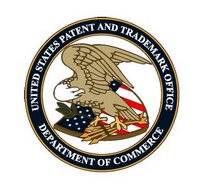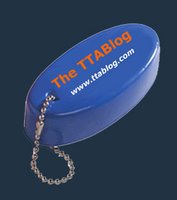In a 62-page opinion, the Board sustained UMG's opposition to the mark
MOTOWN METAL for toy vehicles and accessories, finding it likely to cause confusion with, and likely to dilute by blurring, the famous mark
MOTOWN for musical entertainment and musical recordings.
UMG Recordings, Inc. v. Mattel, Inc., 100 USPQ2d 1868 (TTAB 2011) [precedential].

The Board began by tossing out Mattel's half-baked counterclaim, which sought to "cancel and/or limit UMG’s registrations to the extent they apply to toys, games and playthings." The problem was that UMG's registrations did not cover those goods, and so the relief sought was "irrelevant."
Next, the Board criticized the parties for the size of the record, which included 125 pages of objections, all of which the Board overruled. It complained that both parties submitted much more evidence than was necessary to support their respective claims. [I'd rather err on the side of submitting too much than not enough, wouldn't you? -
ed.].
Turning to the merits, the Board reviewed the history of Motown records, finding

that Opposer has used the mark MOTOWN since 1959 in connection with musical recordings and performances. It also proved by licensees since 2003 of the common law design mark to the right, for toys and games, including board games and karaoke. UMG admitted that "Motown" is a play on "Motor City," which is commonly understood to refer to Detroit, Michigan.
Mattel's MOTOWN METAL toy vehicles were first shipped in 2006 as part of its "Hot Wheels" line, and consisted of seven items replicating cars made by Detroit auto makers. Mattel contended that "Motown" is merely a nickname for Detroit and therefore is a "generic geographic description" entitled to only "extremely limited protection."

The parties submitted expert testimony regarding the significance of the word "Motown." Mattel's expert opined that "Motown" refers to the record company, but more broadly is a descriptor for a type of musical style or genre not limited to that record company. UMG's expert asserted that, to the extent there is a "Motown" style of music, that merely emphasizes the strength of the MOTOWN mark. Moreover, he contended that if "Motown" is used to refer to Detroit, that reference is derived directly from Motown and the Motown sound.
The Board found that the term "Motown" was created by Barry Gordy, Opposer's founder, and refers to a style of music. However, Mattel did not establish that this term is "generally understood to describe a style reflected in the music of non-Motown artists." The Board noted that, since 2003, the media have used the word Motown to refer to Detroit; dictionaries define "Motown" as Opposer's record company, the style of music, and the city of Detroit.
Likelihood of confusion: The Board found that, when created, the mark MOTOWN was arbitrary and inherently distinctive, and it "only became stronger in view of the established fact that Mr. Gordy and his company forged a new popular music style," a style that is "strongly and primarily associated with opposer."
Sales and advertising under the MOTOWN mark were "extensive," and the demonstrated popularity of the MOTOWN label and its artists led the Board to conclude that Motown is "very famous in connection with musical recordings and musical entertainment." And although the mark is not famous for the licensed goods, the Board noted that "a famous mark such as Motown can be expected to cast a long shadow and to be used in connection with numerous collateral goods, i.e., consumers would expect certain non-music-related items containing the Motown brand to be sponsored by opposer."
The Board concluded that the adoption of the word "Motown" to refer to Detroit does not diminish the strength of MOTOWN as a mark. The uses of "Motown" in the media are not commercial uses, and a trademark owner has "no right to control public discourse whenever the public imbues his mark with a meaning beyond its source-identifying function." UMG actively policed its mark, and third-party uses of "Motown" in the Detroit area were considered to be insignificant and/or non-competing. In short, these third-party uses did not diminish the fame or strength of the MOTOWN mark or render it weaker due to geographical descriptiveness.
As to the goods/services, Mattel's toys were close enough. The record showed that Opposer has licensed the MOTOWN mark in connection with a wide range of goods and services, and consequently:
It requires no stretch of the imagination for consumers to believe that these varied collateral goods could reasonably include toy cars. Thus, particularly in view of the fame of opposer's MOTOWN marks in connection with its music and entertainment services, we find that applicant's “toy vehicles” are sufficiently related to, and reasonably within the scope of, opposer’s MOTOWN-branded collateral goods and are likely items in opposer’s MOTOWN-branded retail store and museum gift shop, that confusion as to source is likely if identified by substantially similar marks.
As to the marks, the Board pointed out that as the strength of a mark increases, the degree of similarity between marks to support a finding of likely confusion decreases. Moreover, in Mattel's mark, "the principal connotation of MOTOWN will be as a reference to opposer, whether or not it also conjures up the city of Detroit; and this connotation is not diminished or changed by the addition of the highly suggestive, if not merely descriptive, term METAL to the mark."
The Board concluded that mark MOTOWN METAL is "substantially similar to opposer’s word mark MOTOWN, and significantly more similar than dissimilar to opposer’s other MOTOWN marks."
And so the Board found confusion likely and it sustained the Section 2(d) claim.
Dilution: Although UMG did not provide survey or other evidence measuring the public’s "actual" recognition” of opposer’s MOTOWN marks, the Board found the evidence of public exposure so strong "that we infer from this significant actual recognition among the general public as well." The fame of the MOTOWN mark is not limited to a geographic region, segment of an industry or service, or particular channel of trade.
The Board then turned to the six non-exhaustive factors of Section 43(c). It found the marks to be sufficiently similar that the MOTOWN METAL mark will "trigger consumers to conjure up" Opposer's famous mark. Furthermore MOTOWN is inherently distinctive, it has been in substantially exclusive use, and it enjoys substantial recognition.
There was no evidence that Mattel intended to create an association with Opposer's mark, and no evidence of any actual association.
Balancing these factors, the Board found that the MOTOWN METAL mark is likely to dilute Opposer's mark, and it sustained the Section 43(c) claim.
TTABlog comment: I don't think MOTOWN METAL for toy cars conjures up MOTOWN Records, nor is it confusingly similar to the MOTOWN mark. To me, MOTOWN METAL for toy cars connotes American autos made in Detroit. Seems to me that Mattel got shafted here. What do you think?
I note that Mattel did not disclaim the word "Motown." Legally it wouldn't have made a difference, but shouldn't Mattel have done so in light of its geographical descriptiveness argument? Suppose Mattel had disclaimed "Motown" after an Examining Attorney's requirement of same. Would that have made a difference here? I doubt it. Since MOTOWN is a "very famous" mark, it is perhaps invincible.
FWIW, two years ago, the Board sustained UMG's opposition to MTOWN & Design for clothing, finding the MOTOWN mark famous for Section 2(d) purposes. [
TTABlogged here].
Text Copyright John L. Welch 2011.





































